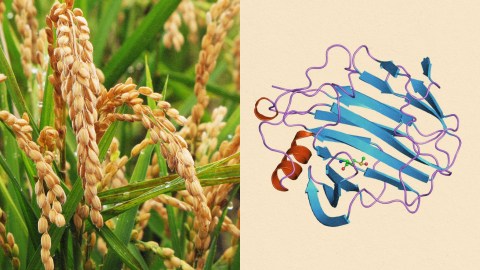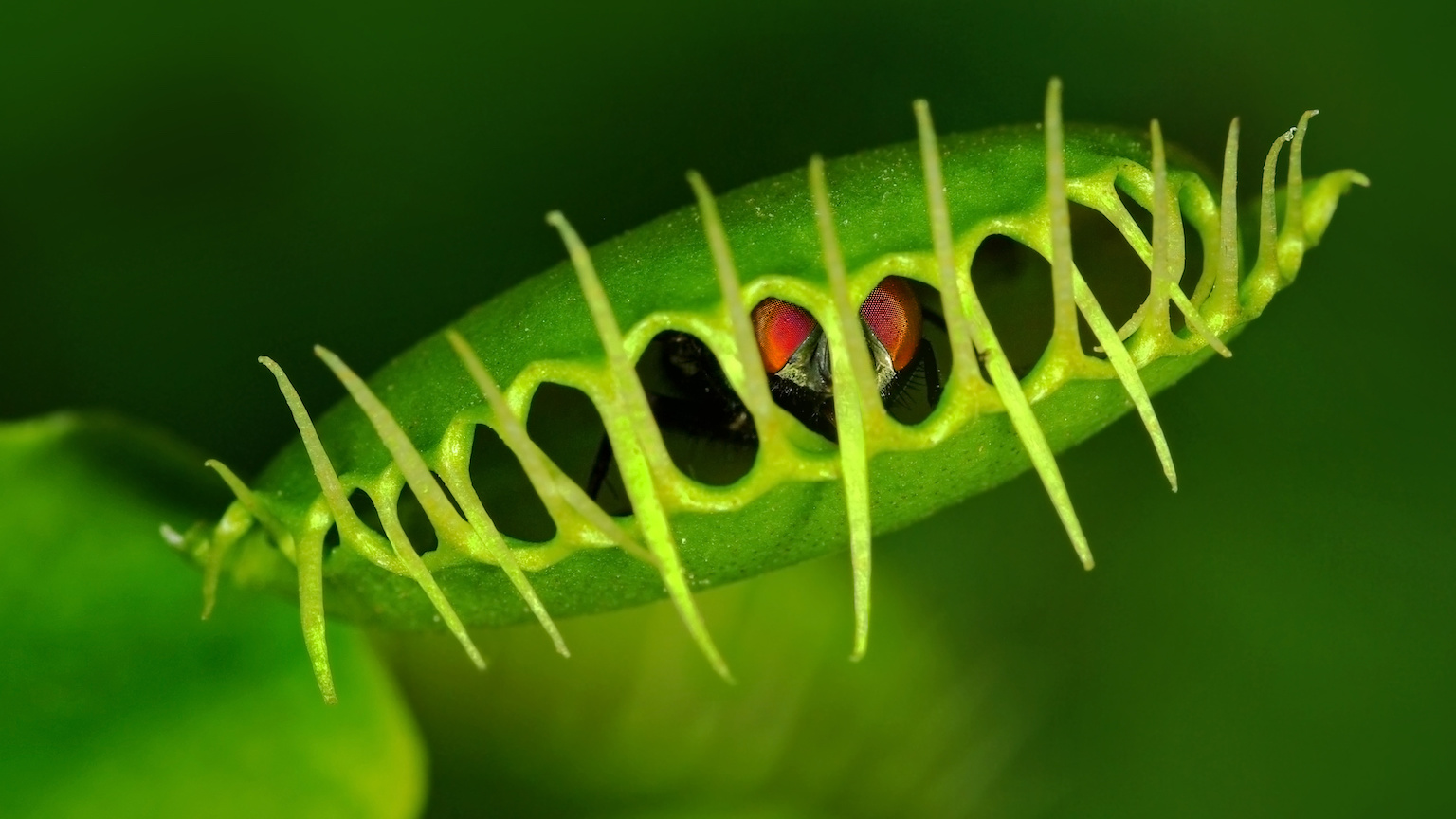Scientists bioengineer plants to have an animal-like immune system

- Plants lack an adaptive immune system — a powerful system capable of detecting practically any foreign molecule — and instead rely on a more general immune system.
- Unfortunately, pathogens can rapidly evolve new ways to avoid detection, resulting in colossal crop loss.
- Using a rice plant as a model, scientists have bioengineered a hybrid molecule — by fusing components from an animal’s adaptive immune system with those of a plant’s innate immune system — that protects it from a pathogen.
Evolution is in a perpetual cycle of churning out new pathogens. Luckily for us humans and many other animals, we have a very advanced immune system — known as the adaptive immune system — that allows our bodies to very precisely target pathogens using antibodies and a whole host of other weapons, like T cells. When we get vaccinated against a disease-causing organism such as measles or COVID, we are prepping this adaptive immune system for future encounters with the pathogen.
Plants lack this. While they do have a more general immune system — known as innate immunity — it is not nearly as precise or powerful as adaptive immunity. While this innate immune system has withstood the test of time, it leaves plants, including important food crops, vulnerable to new strains of pathogens.
What if it was possible to bioengineer plants to have an adaptive immune system? That’s precisely what Jiorgos Kourelis and his colleagues did, and their results were reported in the journal Science. Their method could provide a path toward the long-sought goal of rapidly and precisely modifying susceptible crop species to give them resistance to emergent pathogens and pests.
An evolutionary dance
Plant immunity can be divided into cell-surface and intracellular immunity. Coating the surface of plant cells, immune receptors monitor for ancient pathogen-associated molecular patterns (PAMP). These are non-specific markers that simply indicate a microbial threat is present. A rough analogy is a security camera. The immune receptors act like security cameras, setting off an alarm when they recognize something suspicious, say, a person with a mask (this is the pathogen-associated molecular pattern in this analogy) trying to break into the house. But the camera isn’t precise enough to determine who it is.
When these surface-bound receptors are triggered, they initiate a cascade of protective measures that kill the pathogen. To avoid this, pathogens have evolved to release an arsenal of immune sabotaging agents called effectors, which are injected into plant cells to disrupt cellular functions. In response, plants have evolved their own strategy to counteract effectors. They use a repertoire of intracellular immune receptors called NLRs (nucleotide-binding, leucine-rich repeat immune receptors) that recognize and neutralize pathogen effectors.
For millions of years, plants and pathogens have engaged in a never-ending evolutionary dance, with plants evolving NLRs that can detect and disarm pathogen effectors, and pathogens evolving effectors that are undetectable by plant NLRs.
However, when this evolutionary dance affects a staple food crop, it can pose a serious threat to millions of people. For example, a single fungal pathogen, Magnaporthe oryzae, is responsible for 30% of rice production loss globally, destroying food that could have fed 60 million people. That’s why scientists like Kourelis want to find ways to give crops a little help.
A hybrid plant-animal immune system
The part of the NLR protein that recognizes suspicious pathogenic molecules is called an integrated domain (ID). Scientists have identified a few hundred unique IDs in rice plants, suggesting that the plants can detect a few hundred different effectors. That might sound like a lot, but remember that plants possess a generic immune system capable of recognizing only general patterns. The antibodies produced by humans, on the other hand, have the potential to recognize one quintillion (one million trillion) different and highly precise molecular patterns.
Given that the animal adaptive immune system can generate antibodies against virtually any foreign protein it is exposed to, Kourelis and his team wondered if they could harness the power of antibodies to help plants fight against pathogens. In a proof-of-principle study, Kourelis modified a protein called Pik-1, one of the NLRs produced by a rice plant. The team replaced Pik-1’s ID region with an antibody fragment that binds to fluorescent proteins. Next, they exposed bioengineered and control (unaltered) plants to a pathogen (Potato virus X) that itself was genetically modified to express fluorescent proteins. The bioengineered plants showed significantly less fluorescence, suggesting that the NLR-antibody hybrid molecules produced by the plants successfully blocked the virus from replicating.
The authors suggest that this technology could yield “made-to-order resistance genes” to protect crops against pathogens and pests. That would be a welcome development for the world’s farmers and the people they feed.





